
How To Get SaaS Startup Funding
COVID-19 showed many of us that job security is a myth. In fact, the pandemic caused one of the worst employment crises since The Great Depression, with the OECD reporting that, in some countries, employees were working only one-tenth of their pre-pandemic hours.
2020 and 2021 saw a rise in entrepreneurship and innovation worldwide, with an increase partly due to the recent economic downturn. From starting software companies as a way of boosting income to feeling that the time was finally right to launch a Software or SaaS product, there is a range of reasons for this recent increase in startups. But whatever the reason, it’s critical to know the risks.
It’s expensive to develop, deploy, and sell software online, especially at the early stage of a startup, so securing Startup funding can be critical for the survival of SaaS companies.
So how can you go about securing SaaS Startup funding? We took a look at the options.
2 Questions To Consider Before Looking for SaaS Startup Funding
The funding ecosystem is complicated. Before you can sell SaaS online, knowing who you should get startup SaaS funding from and precisely what funding you need is essential. To make the right choice for your SaaS, you must do some housekeeping first.
1. At Which Stage Is Your Startup?
The stage at which SaaS companies are operating helps determine the kind of funding they should chase. We briefly outline the stages below:
-png.webp?width=730&height=388&name=startup-lifecycle%20(2)-png.webp)
Pre-Seed Startup Stage
The pre-seed stage is reserved for the smallest SaaS companies. Early-stage startups looking for this type of funding might want help developing a working prototype or getting their product to market.
According to Profitwell, this will require a small capital of around $1 million or less. Getting pre-seed funding is highly competitive. Investors will be looking for well-developed product ideas and solid founding teams to give them the confidence they need to invest in early-stage startups.
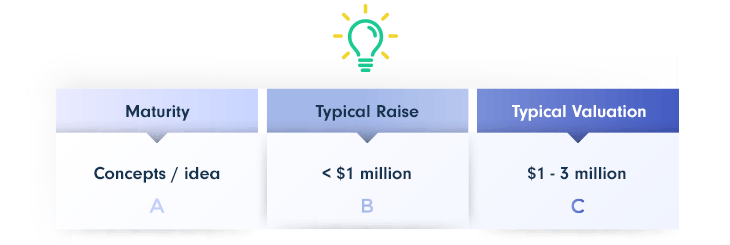
Seed Startup Stage
The seed stage is commonly seen as the first official equity funding stage, with software and SaaS companies needing to raise between $100,000 and $2 million. You need capital to help meet your product development needs, expand your team, and begin turning a profit at this early stage. Going for SaaS Open Source as a development method is an option for several company founders.
To qualify for funding, your business must have more or less doubled in valuation since the pre-seed round. And, as Investopedia reports, your business should be valued between $3 million and $6 million, though these are broad guidelines.
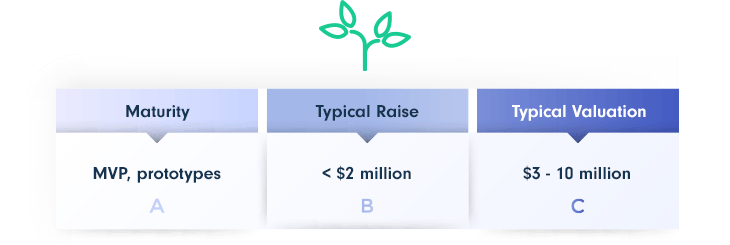
Series A - Revenue Generation
The Series A funding stage becomes an option when your SaaS or Software business has started generating revenue, and you’re looking to expand. At this stage, you need capital to optimize existing business processes, like the SaaS customer onboarding, which can greatly help boost conversion rates or reduce customer churn.
While the scale of this funding varies, businesses raise around $10 million on average. To attract investors, you’ll need to develop your business model further and show evidence that it can withstand future cash flow fluctuations.
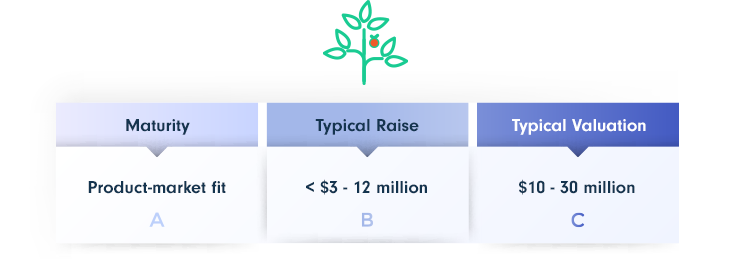
Series B - Equity-based funding
Series B funding is a form of equity-based funding where you sell shares in your company to investors in return for capital. This capital acts as a cash injection to boost your growth.
The Corporate Finance Institute (CFI) notes that SaaS companies looking for Series B funding need strong valuations of about $10 million. To secure funding, your monetization strategy must have succeeded. In addition, you need to demonstrate that your product is profitable and have metrics that prove your business can compete at a certain level.
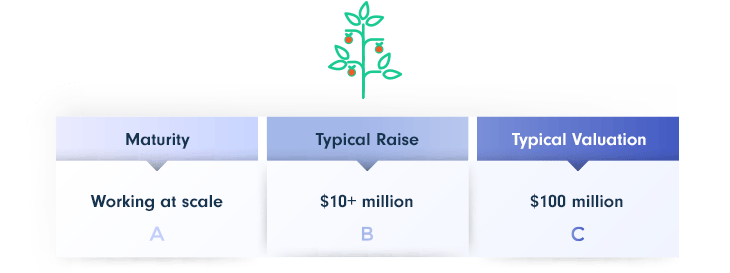
Series C - Final stage funding
This is the final funding stage. In 2019, Series C Startups raised an average of $103 million, up from $48 million in 2012.
This stage focuses on aggressive expansion. Your SaaS or Software company should generate sufficient capital for scaling so that investors will get less equity. To qualify for funding, your business must be established enough that the investment risk is low.
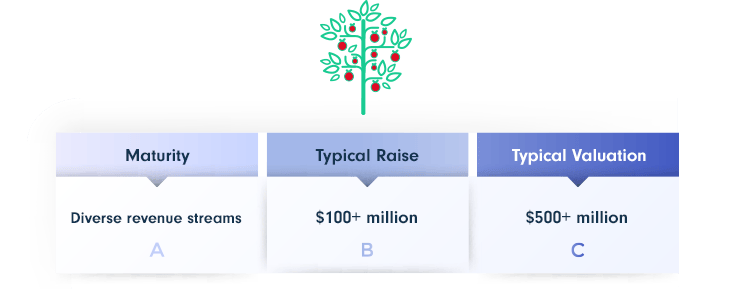
2. How Do You Prepare For The Funding Journey?
Once you’ve determined the SaaS Startup funding stage you’re in, it’s time to get prepared for your funding journey. Here are a few tips:
Budget Your Time
Securing Startup funding takes time and consistent effort. You’re likely to go through multiple pitching rounds and re-working sessions, so plan accordingly.
Prepare Your Documentation
Being organized goes a long way to securing SaaS Startup funding. Prepare your business plan, pitch decks, and financial projections. It’s also helpful to update any legal documentation like your articles of incorporation – the set of documents you must file with a government body to document the establishment of your company.
Plan Effectively
You’ll need a detailed business plan for using your Startup funding to grow your SaaS company. You need to include details regarding further investments for different optimization tasks like improving the SaaS user onboarding.
Don’t Neglect Your Business
Make sure your business doesn’t suffer while looking for funding, as any decline in growth could deter future investors. Double your marketing efforts to help reduce customer churn.
Grow Your Business
Try to grow your business as much as possible before hunting for Startup funding.
No 3rd party integrations. No hidden costs. No wasted time.
Just a solution as unique as your business’s needs.
Ready To Start Looking for SaaS Funding? Here are Your Options.
The various funding ecosystems have different legal, logistical, and practical requirements. You need to understand these thoroughly before choosing the best option. Taking time to do in-depth research is imperative and saves time and money in the long run.
We’ve put together a list of some of the most popular Startup funding options for SaaS companies, taking a closer look at the pros and cons:
Venture Capital
Venture capital (VC) firms raise money by asking a group of partners to contribute to their investment fund, usually investing in Startups with promising growth potential. Sometimes confused with Private Equity (PE), both raise capital from limited partner (LP) investors and invest in privately-owned companies.
However, there are significant differences in how venture capital and private equity firms conduct business, such as the companies they invest in, the levels of money they provide, and the amount of equity they want for their investment.
Venture Capital usually generates less than 50% of the company's equity. The financial risk of early-stage startup investment means VCs prefer to spread smaller amounts of money over more businesses. This makes Venture Capital the preferred private market funding for SaaS Startups.
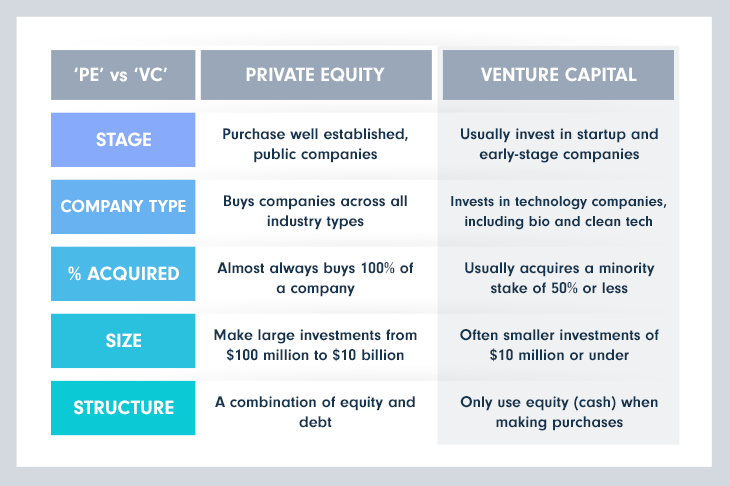
According to Forbes, venture capital funding is usually between $1 million and $5 million. Venture capitalists require company valuations ranging from $5 million to $15 million for Series A funding. To secure VC funding, you'll have to prove your business has the potential to grow substantially. Venture capitalists will want to see metrics that indicate the value of SaaS companies, so be prepared to answer a few tough questions.
Pros:
Ample capital, as venture capitalists tend to have deep pockets. On average, a venture capitalist firm manages about $207 million in venture capital for its investors annually.
Venture capital offers credibility and social proof of your SaaS venture’s value. If a venture capitalist backs you, it sends a message to your industry that your product isn’t only viable but valuable and that potential customers can trust your product.
Securing a follow-on investment becomes easier. If a venture capital funds you for one funding stage and reaches your targets, they’ll have more faith that further funding will secure a similar outcome.
Cons:
Venture capitalists might request equity or board seats in your SaaS company in exchange for funding. This means you’ll be relinquishing a portion of control over your business.
You’ll be required to provide water-tight metrics that prove you’re performing well. Note that doing due diligence to check your metrics might take time, delaying getting the funding you need.
As a venture capitalist will have a vested interest in your business, they might want a say in running things, leading to conflict.
Angel Investors
Angel investors are usually individuals (rather than a fund or firm) that personally invest in your business. You give up an equity stake in exchange for the funding.
Typically, angel investors provide less capital than venture capitalists. According to the Angel Capital Association, these investors are likely to commit between $5,000 and $100,000. In comparison, VC firms usually invest an average of around $2.5 million in capital, though these values can be pretty broad.
Angel investors are more likely to provide you with funding if your business is in its earlier stages of development. Generally, these investors look for innovative companies with the potential for a high revenue turnover within the first three to seven years.
Pros:
As angel investors are free agents, they can become more personally involved in your business. They tend to offer mentorship opportunities, so you should be able to approach them for business guidance.
Building a one-on-one relationship with your investors creates an opportunity for a stable funding stream. Showing your angels that they can trust you with their investment will make them more open to future funding.
Angel investors are more open to risks than other investors. They don’t have board members to answer to, which also means you can expect quicker decision-making.
Cons:
Angel investment can be expensive. When they invest considerable capital, their return-on-investment (ROI) expectations might be as high as 10 times their initial investment within five to seven years.
As angels usually invest alone, there aren’t many oversight mechanisms for their requests. This autonomy means that angels could take advantage of business founders.
The availability, energy, and expertise of angels vary, so it’s worth doing your homework on them first.
Accelerators and Incubators
Incubators are physical spaces that offer a combination of office space, funding, and expertise. These spaces are mostly ‘rented’ in exchange for monthly membership fees or, less frequently, equity.
Incubators can provide extra services like training, network access, and specialist equipment to help businesses get started. As such, they’re best suited for the seed stage.
An accelerator is a business program that’s usually run with private funds. Forbes reports that accelerators usually offer seed money in exchange for business equity, with investments ranging between $10,000 and $120,000.
These programs offer support to Startups for a fixed period in the later stage of scaling. They act as accelerated growth mentors by providing access to investors, financing, and education.
Pros:
Both are used by some of the brightest minds in the business. These networks can offer much support to other entrepreneurs.
Both improve credibility. If you’re accepted into an incubator or accelerator program, it tells your competitors that there’s potential for your business to scale rapidly.
Cons:
The popularity of incubators and accelerators means it’s hard to get accepted into a program.
According to Holloway, most accelerators require 2-10% equity in your business in exchange for their services.
Whether it be in the form of a monthly fee or equity, these programs will cost you. However, they can’t guarantee increased capital.
RBF – Revenue-Based Financing
Revenue-based financing (also known as royalty-based financing) is an excellent method for raising capital. SaaS companies receive a loan from a group of investors, who in turn receive a percentage of the company's ongoing gross revenue (rather than equity) in exchange for the investment.
With an RBF, investors receive a regular share of the business’s income until a predetermined amount has been repaid. Usually, this amount is a multiple of the original investment, generally ranging between three to five times the original investment amount.
Although a business that raises capital through RBF will be required to make regular payments to the original investment, it differs from debt financing. Interest is not paid on the outstanding balance, and there are no fixed payment amounts.
Instead, you are provided a loan based on your business’s overall revenue, and repayment is a percentage of your monthly earnings, plus a multiplier of the original investment.
Pros:
Once the loan is repaid, the business remains entirely yours as there’s no equity exchange.
There’ll be no future investment returns once you pay back the original loan.
Cons:
It isn’t suitable for pre-revenue Startups as the loan provider needs proof of turnover to determine the loan investment.
This type of funding doesn’t come with network assistance, mentorship, or financial advice.
Monthly repayments could be a problem for Startups that struggle financially.
Bootstrapping
Bootstrapping is all about building a business from scratch, where an entrepreneur starts a company with little to no capital rather than relying on outside investments to promote growth. A founder can be considered as bootstrapping when they attempt to found and build their company from personal finances and their operation earnings.
This contrasts to acquiring funds through the previous methods we discussed, such as raising capital through angel investors or venture capital firms. Instead, bootstrapped founders rely on their savings, run lean operations, or have a quick inventory turnover. It’s not uncommon for a company to take preorders for a product and use the funds raised to build and deliver the product itself.
Because a business that bootstraps is often working with limited sources of financing, it’s vital to have a competent development strategy where all possible risks will be accounted for. Also, any available funds need to be appropriately reallocated back into the most critical parts of the business model.
Some of the largest, best-known SaaS companies (as well as software, digital goods, and tech) began their life as bootstrapped Startups. These include a range of companies, such as Facebook, eBay, Basecamp, GitHub, and Plenty Of Fish, to name but a few. Let’s take a closer look at the pros and cons:
Pros:
Bootstrapping adds an extra incentive to build a working SaaS product that generates immediate revenue.
You retain full ownership and control of the direction of your business.
Bootstrapping controls the company and its directions, whereas external funding can mean taking on external pressures and responsibilities to keep investors happy.
Cons:
Scaling, budgeting, and managing your SaaS business is more complex, as you don’t get cash injections from other sources.
You won’t have access to the mentorship, expertise, marketing, and other opportunities that come with other forms of SaaS Startup funding.
You may go into debt very quickly if you overstretch your limited resources.
Crowdfunding
Crowdfunding is an excellent option for gaining startup funding if your Software, digital product, or SaaS business is at an early stage. Rather than more traditional funding methods that rely on financing from one institution such as banks, crowdfunding is a numbers game, gathering small investments from a more comprehensive source of people.
Crowdfunding campaigns are usually conducted through online platforms, removing the need for founders to spend time on traditional pitches face-to-face meetings. It’s a great way to raise money and interest by creating campaigns and having people donate to your cause on various platforms.
There are a few different types of crowding funding available, depending on your particular business, product, and long-term goals.
Reward-based crowdfunding is the one that most people will recognize. In return for a set of fixed donation amounts, investors are usually given a range of offers. These can be in the form of early access or reduced “early bird” prices for products and services, or additional bundled benefits that might not be offered to those who buy into the product at a later date.
Equity crowdfunding most resembles the other forms of gaining investment as it involves giving up a portion of your business in return for investment rather than pre-selling a product. As with other forms of equity investment, the Startup’s success helps determine each investor's stake value.
Debt (or loan-based) is a lot like getting a loan, except rather than going through a bank, you receive the investment from a series of backers who lend you the money you need to help you get up and running. These backers finance your Startup on the basis that you return their investment plus a fixed interest rate by an agreed time. This is often referred to as P2P (peer-to-peer) lending.
Pros:
It’s an accessible and fast way to raise money, especially for early-stage startups.
You’re in control - you decide what, how, and where you crowdfund.
Democratizes investment challenging the big company status quo while providing a level of transparency.
This strategy is continually evolving and offers new flexibility that traditional options don't.
Cons:
It requires knowledge of available platforms.
Crowdfunding regulations restrict the number of investors you can have and the capital you can raise.
Platforms come with facilitation and payment processing fees, and those costs all add up.
You don’t get expert guidance available with other options.
Preparing Your SaaS Funding Strategy
Once you’ve decided on a SaaS Startup funding option, it’s time to approach an investor. However, with individual VC firms receiving more than 1,000 proposals a year, there is much more demand than investments available. Investors are picky, so you’ll have to make a strong case or risk losing out.
Impress Investors With These 5 Vital Metrics
To stand a fighting chance of finding SaaS Startup funding, here are key metrics you’ll need to get ready:
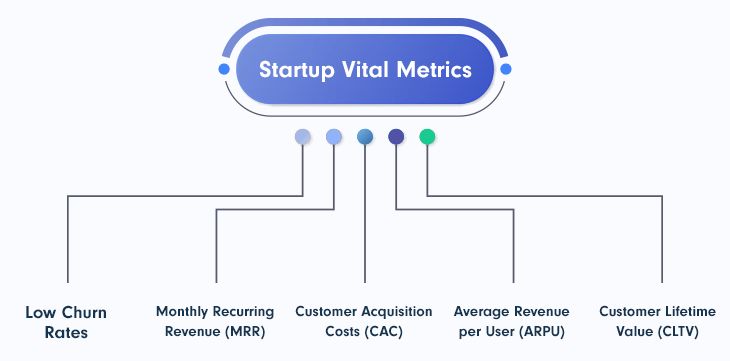
Low Churn Rates are essential if you want to secure SaaS Startup funding. Churn rates determine the number of customers who leave your service within a specific time frame. Keeping your churn rate low is essential for two reasons:
-
Low churn shows investors that your customer SaaS retention is high. Customer retention means steady payments and saves on customer acquisition costs.
-
Keeping your churn rate low helps to maintain your growth trajectory. Showing long-term viability will motivate investors to believe in your business and back you.
Monthly Recurring Revenue (MRR) projections show your business’s viral growth potential, making it an essential metric for obtaining SaaS Startup funding. It indicates how you maintain your customer relationships and how well your service fits into the market.
Customer Acquisition Costs (CAC) provides investors with proof that your model works and that your sales team can meet demand quotas. You also show you’re good at targeting new customers, upping your chances of getting that all-important funding.
Average Revenue per User (ARPU) shows investors how much revenue your customer base generates for you on average. It gives your investor an idea of how efficient your business model is and increases your chances of securing SaaS Startup funding.
Customer Lifetime Value (CLTV) refers to the total amount of money a user will spend on your product if you keep them as a customer. A high CLTV indicates that you’re continuously serving your customers and providing value.
No 3rd party integrations. No hidden costs. No wasted time.
Just a solution as unique as your business’s needs.
How To Approach an Investor
To get SaaS Startup funding, you need to stand out against your competitors. Here are some tips for how to approach potential investors:

Do Your Research on your investor’s history in the industry. In which Startups have they invested before? What other projects have piqued their interest? Learning more about their other business interests will show you whether they’re a good match for your Startup.
Get an Introduction, maybe from a mutual connection, and ask them to set up a meeting between you and the potential investor. Attending SaaS-related events, or connecting on a platform such as LinkedIn, are other ways to get in touch. If you choose to communicate via email, attach a well-structured pitch deck.
Create the Perfect Pitch, alongside a professional business plan, which should include:
An executive summary outlining your company's mission statement and a clear description of your products or services.
A company description outlines your business goals, your target market, and the solutions you can offer them.
A market analysis highlighting your business’s strengths and how these compare to competitors.
A clear description of your team, including their roles and responsibilities.
A marketing plan showcasing how you plan to budget for advertising, target the right customers, and successfully promote and increase your SaaS retention via various channels.
A sales plan that documents sales reps needed, along with plans for onboarding sales staff or outsourcing these services.
A request for funding stipulating the size of the investment you need and how you’ll use the capital you’ve raised.
Financial projections showing the financial goals you’ve set for your business. Make sure you base these on market research.
Final Thoughts on Saas Startup Funding
We cannot stress this enough; whatever route you choose for your SaaS funding, it’s going to require time and effort to secure. You’re likely to face a fair few rejections along the way, each one resulting in time-consuming edits of your funding pitch, but you should look at these as valuable lessons rather than failures.
It’s worth keeping in mind that you’ll have to spend time away from your product while preparing one-pagers, pitch decks and investor decks, business plans, and financial projections - and that’s before you even start having actual conversations with potential investors.
If you want your micro SaasS idea to be the next big thing, be prepared to work and hustle hard, but remember, you don’t have to go it alone. For more insight on how best to market your services and get ahead in the SaaS game, contact us at PayPro Global. We might be just the eCommerce partner you were looking for.
FAQ
How do startups get funding for software?
Many startups still depend on venture capital financial backing to fund their software development. Some startups have successfully initiated Kickstarter campaigns, but these are very rare indeed. Most companies have to acquire funding via venture capital.
Can anyone be an Angel investor?
Anyone can be an angel investor, but you have to find the right one to invest in your business. Angel.co is an excellent site with listings of accredited individuals interested in opportunities to invest their money.
What percentage of startups get funding?
It's hard to get funding for a startup. In general, only 6% of all startups ever receive any funding, and it can take years before you succeed in this competitive industry!
How do I fund a business with no external funding?
Building a business with no funding is possible if you focus on building your brand, generating leads, and qualifying them to get more leads. Doing these three things will eventually create revenue flow for your business even if you do not have funding.
Meir Amzallag
Co-founder and CEO of PayPro Global
Ioana Grigorescu
Content Marketing Manager at PayPro Global
Meir Amzallag
Co-founder and CEO of PayPro Global
Ioana Grigorescu
Content Marketing Manager at PayPro Global
Hanna Barabakh
Hanna Barabakh is a Brand Ambassador at PayPro Global
Adina Cretu
Adina Cretu is a Content Marketing Manager at PayPro Global
Know first. Act fast.
It doesn’t take luck to make it, but it does take knowledge. Be the first to learn the latest industry insights and must know marketing tips and tricks. Sign up and enjoy! Always informed. Never Spammed.







